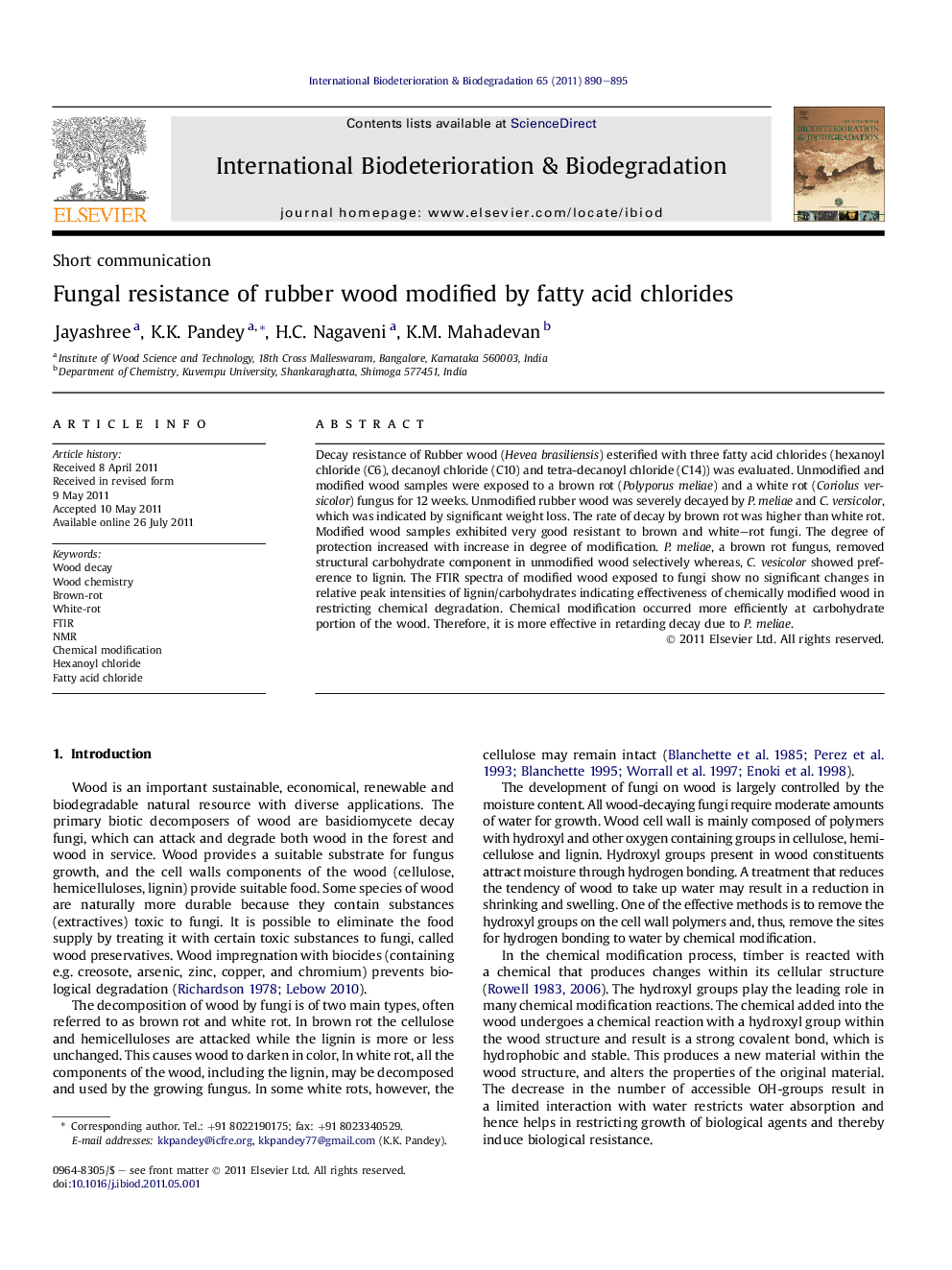| کد مقاله | کد نشریه | سال انتشار | مقاله انگلیسی | نسخه تمام متن |
|---|---|---|---|---|
| 4365347 | 1301754 | 2011 | 6 صفحه PDF | دانلود رایگان |

Decay resistance of Rubber wood (Hevea brasiliensis) esterified with three fatty acid chlorides (hexanoyl chloride (C6), decanoyl chloride (C10) and tetra-decanoyl chloride (C14)) was evaluated. Unmodified and modified wood samples were exposed to a brown rot (Polyporus meliae) and a white rot (Coriolus versicolor) fungus for 12 weeks. Unmodified rubber wood was severely decayed by P. meliae and C. versicolor, which was indicated by significant weight loss. The rate of decay by brown rot was higher than white rot. Modified wood samples exhibited very good resistant to brown and white–rot fungi. The degree of protection increased with increase in degree of modification. P. meliae, a brown rot fungus, removed structural carbohydrate component in unmodified wood selectively whereas, C. vesicolor showed preference to lignin. The FTIR spectra of modified wood exposed to fungi show no significant changes in relative peak intensities of lignin/carbohydrates indicating effectiveness of chemically modified wood in restricting chemical degradation. Chemical modification occurred more efficiently at carbohydrate portion of the wood. Therefore, it is more effective in retarding decay due to P. meliae.
► Decay resistance of wood esterified with fatty acid chlorides has been evaluated.
► Brown rot (Polyporus meliae) and white rot (Coriolus versicolor) fungi were used.
► Modified wood exhibited very good resistant to brown and white-rot fungus.
Journal: International Biodeterioration & Biodegradation - Volume 65, Issue 6, September 2011, Pages 890–895